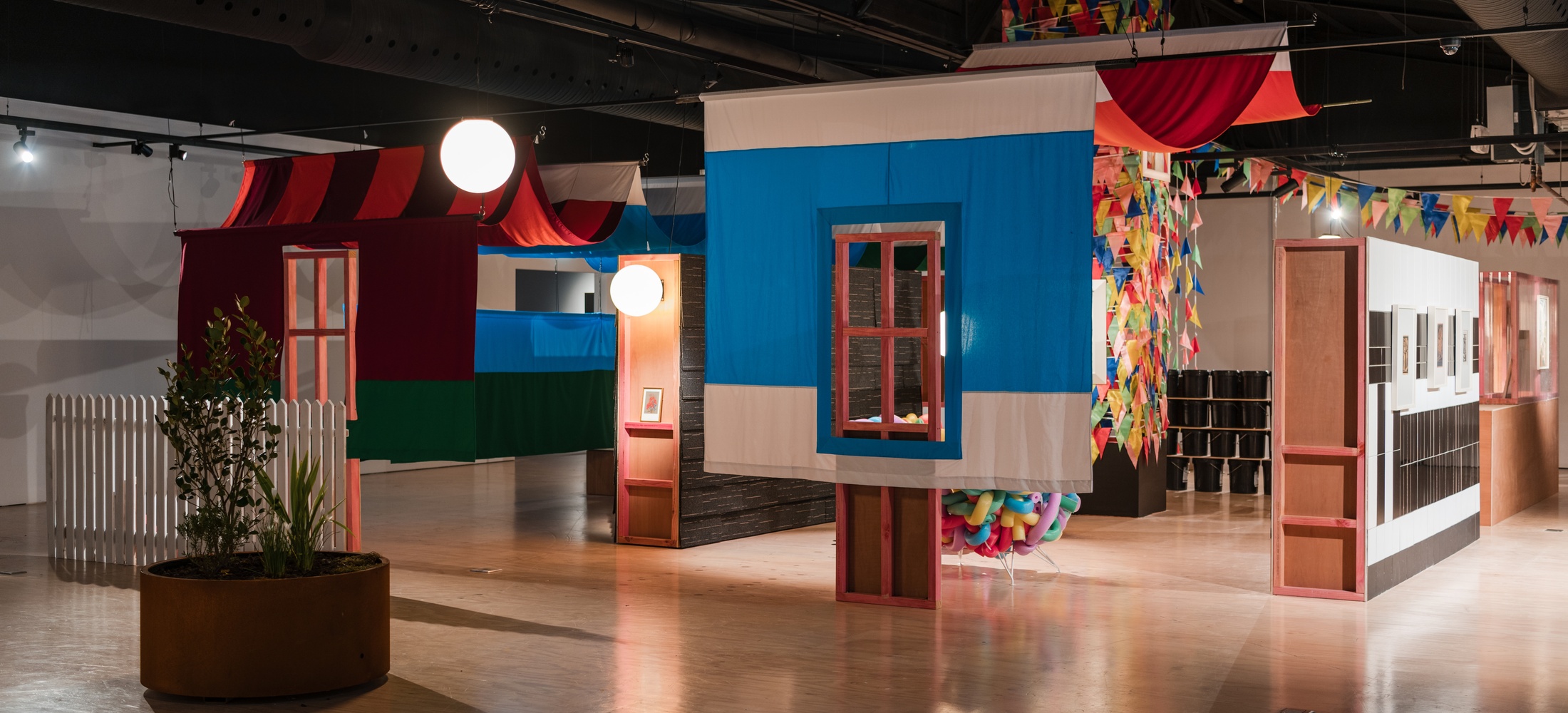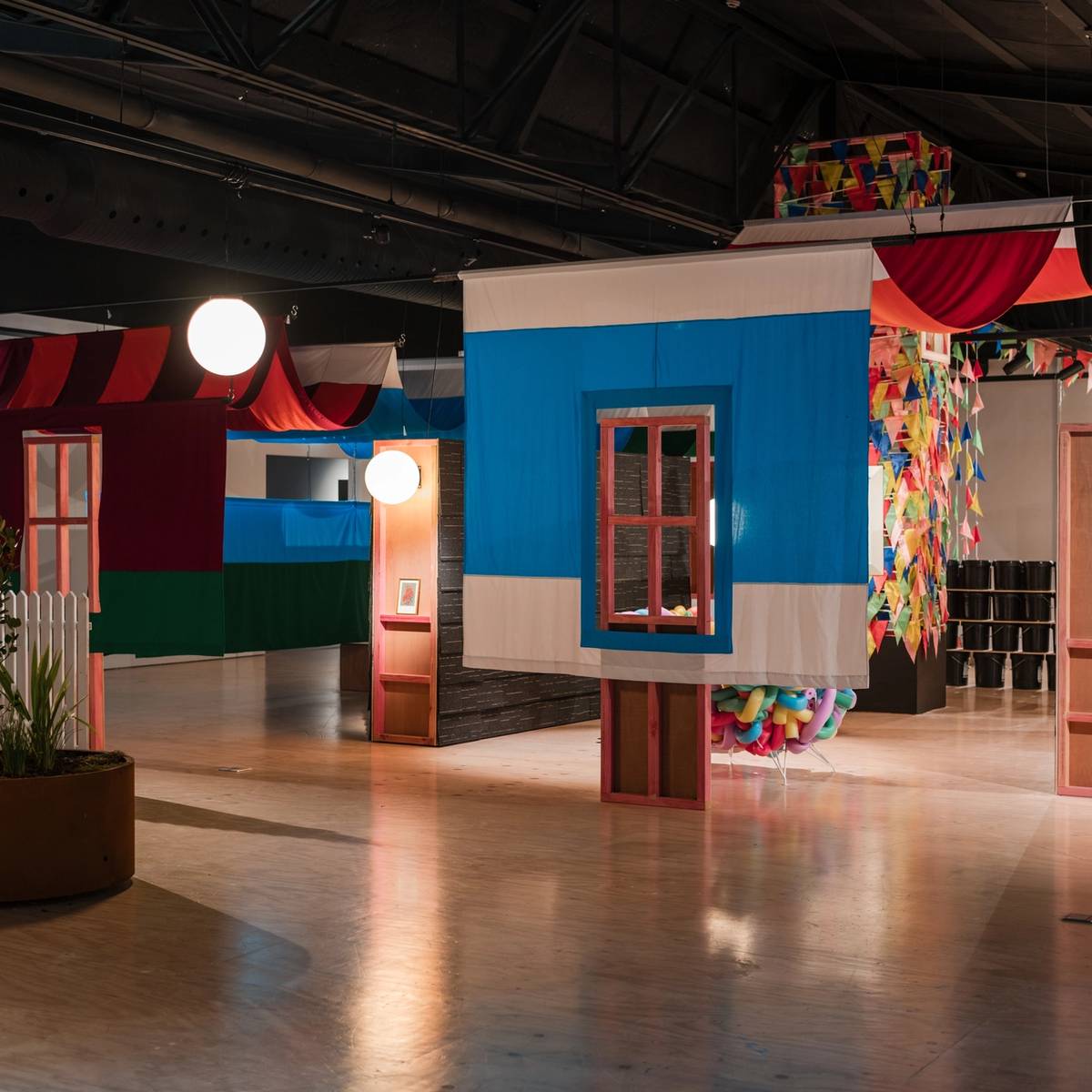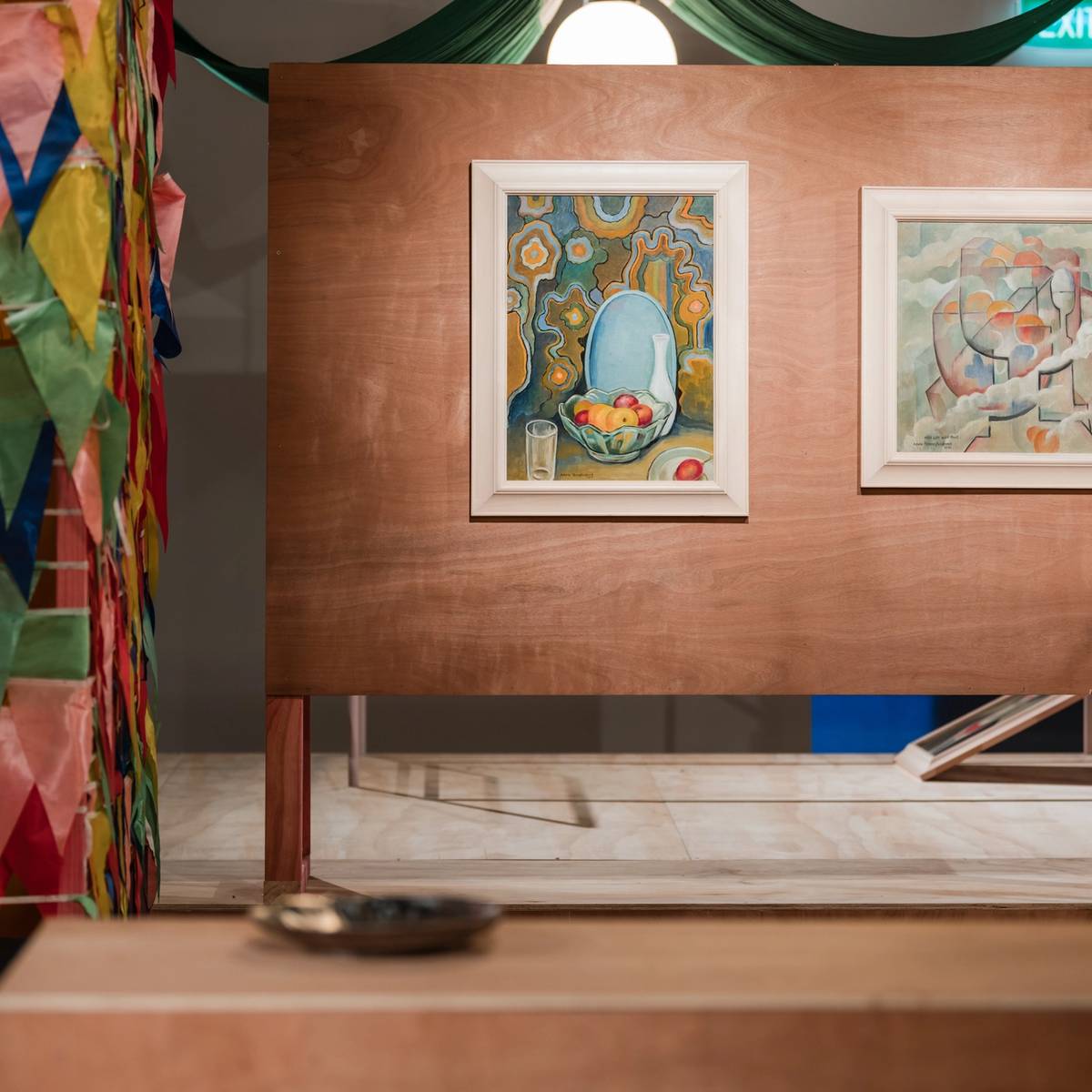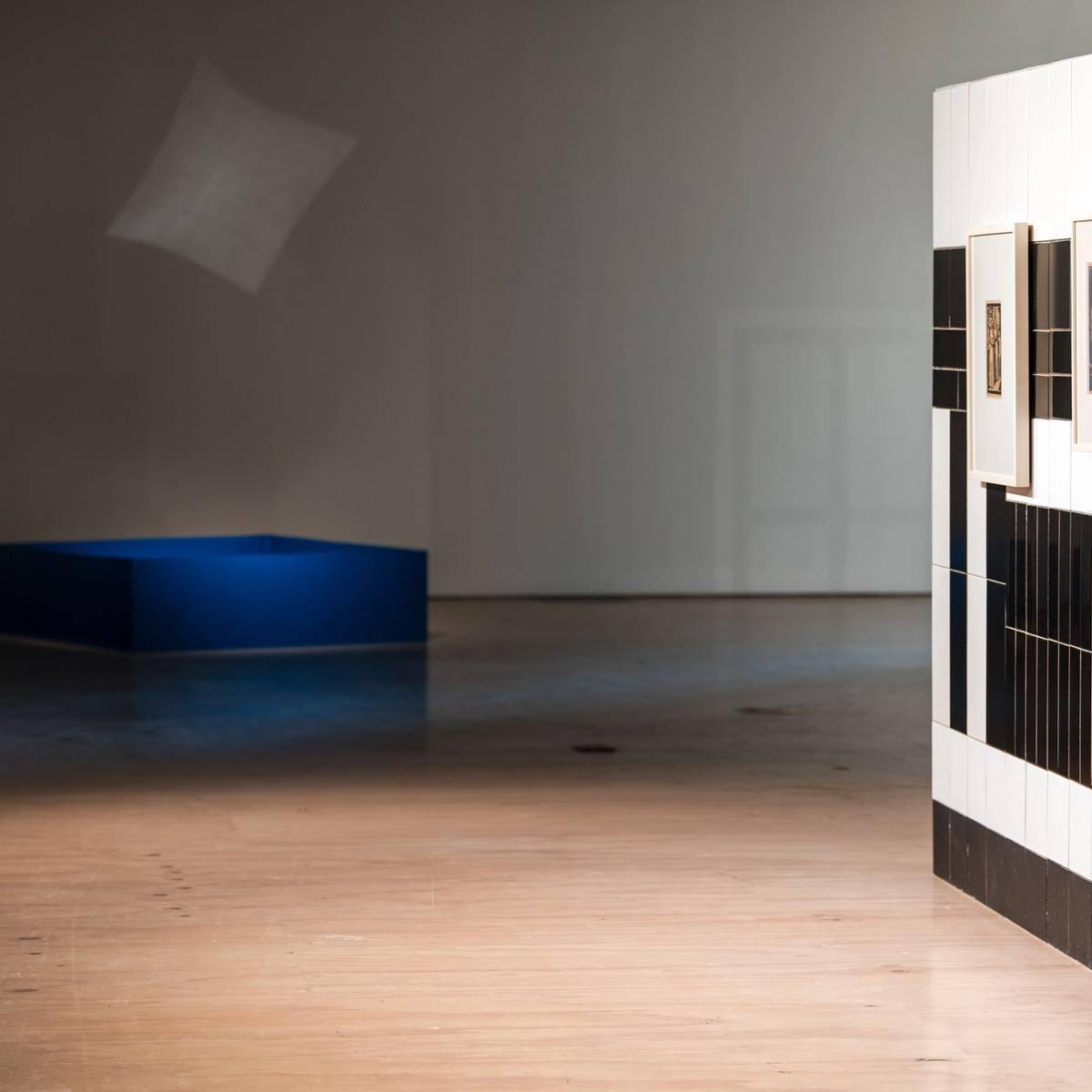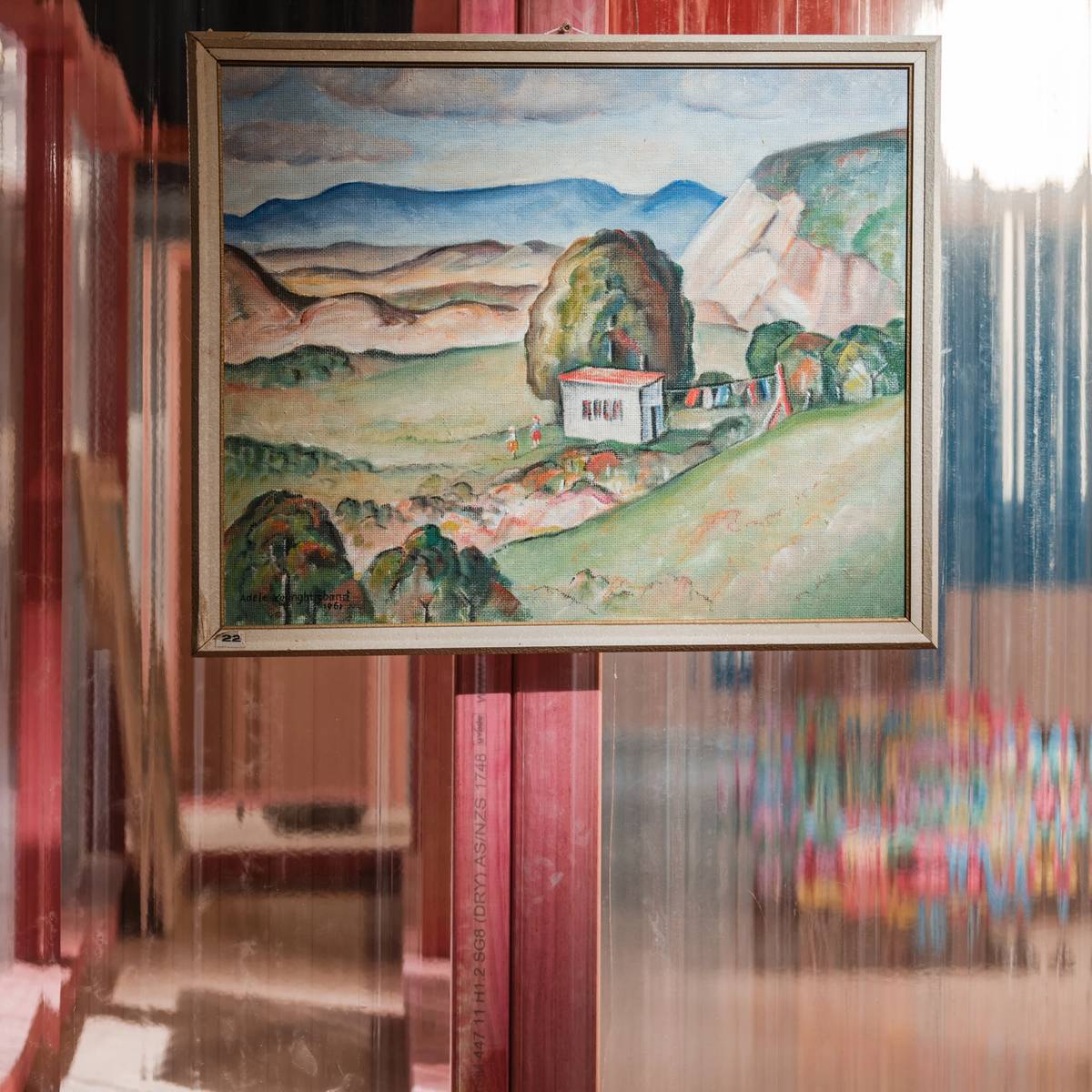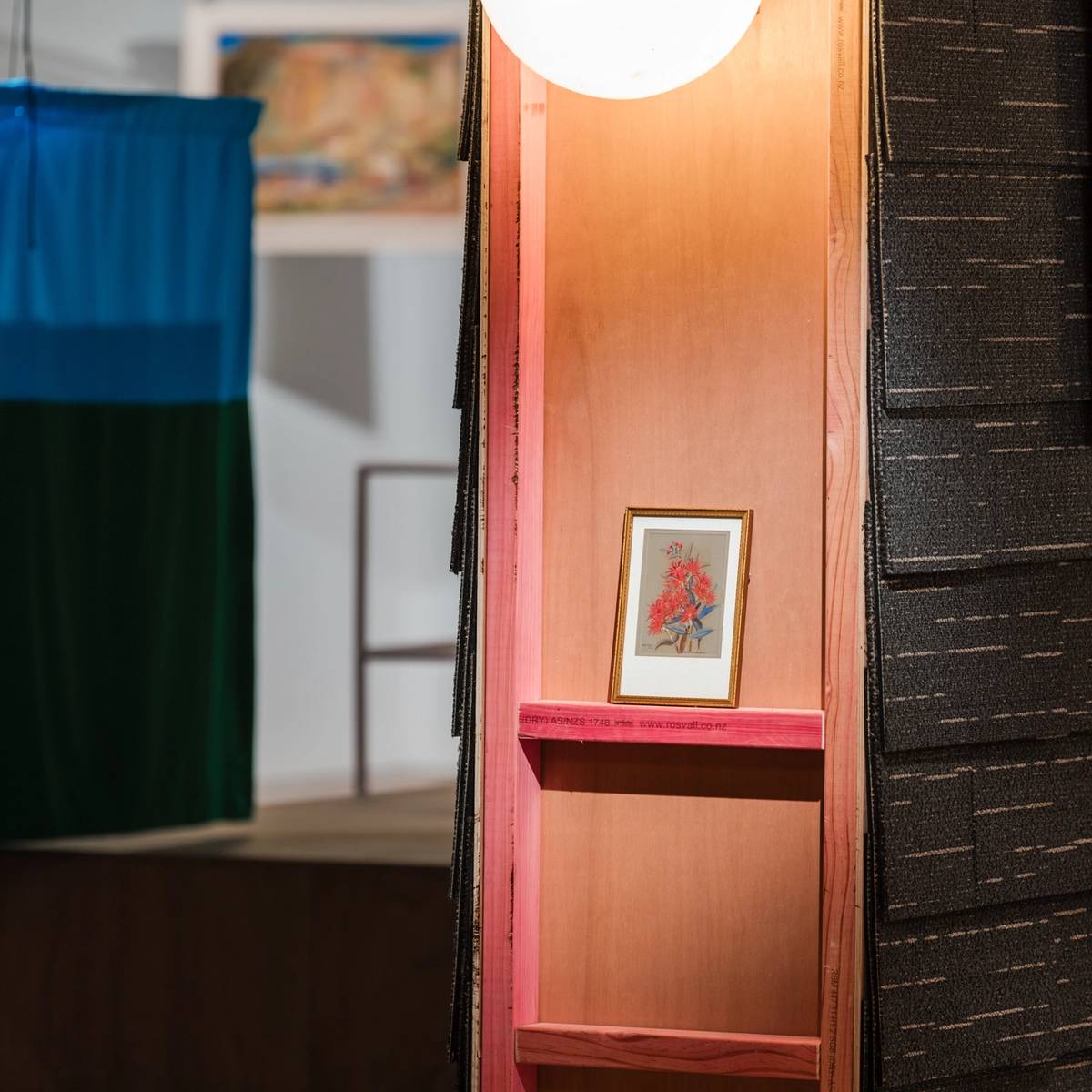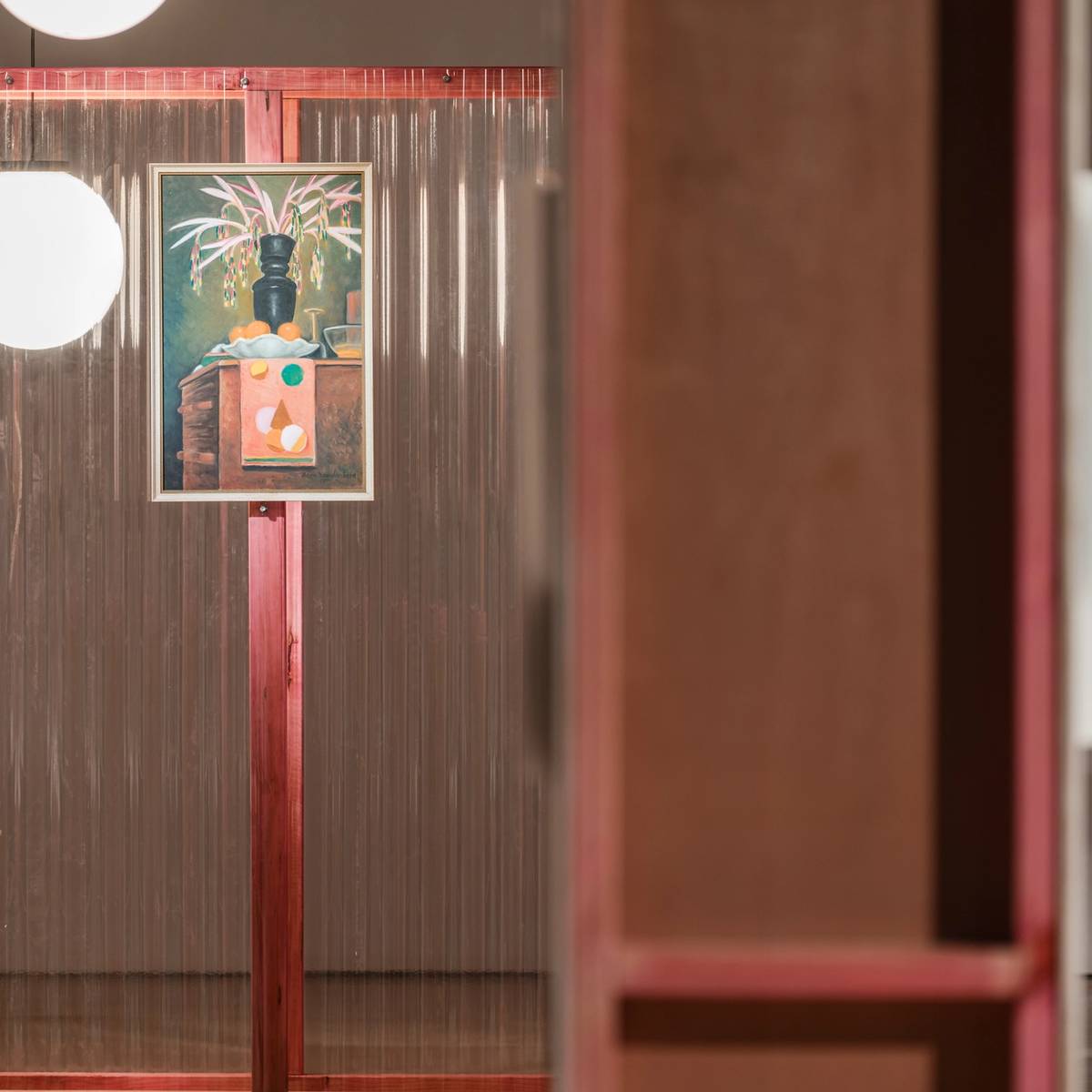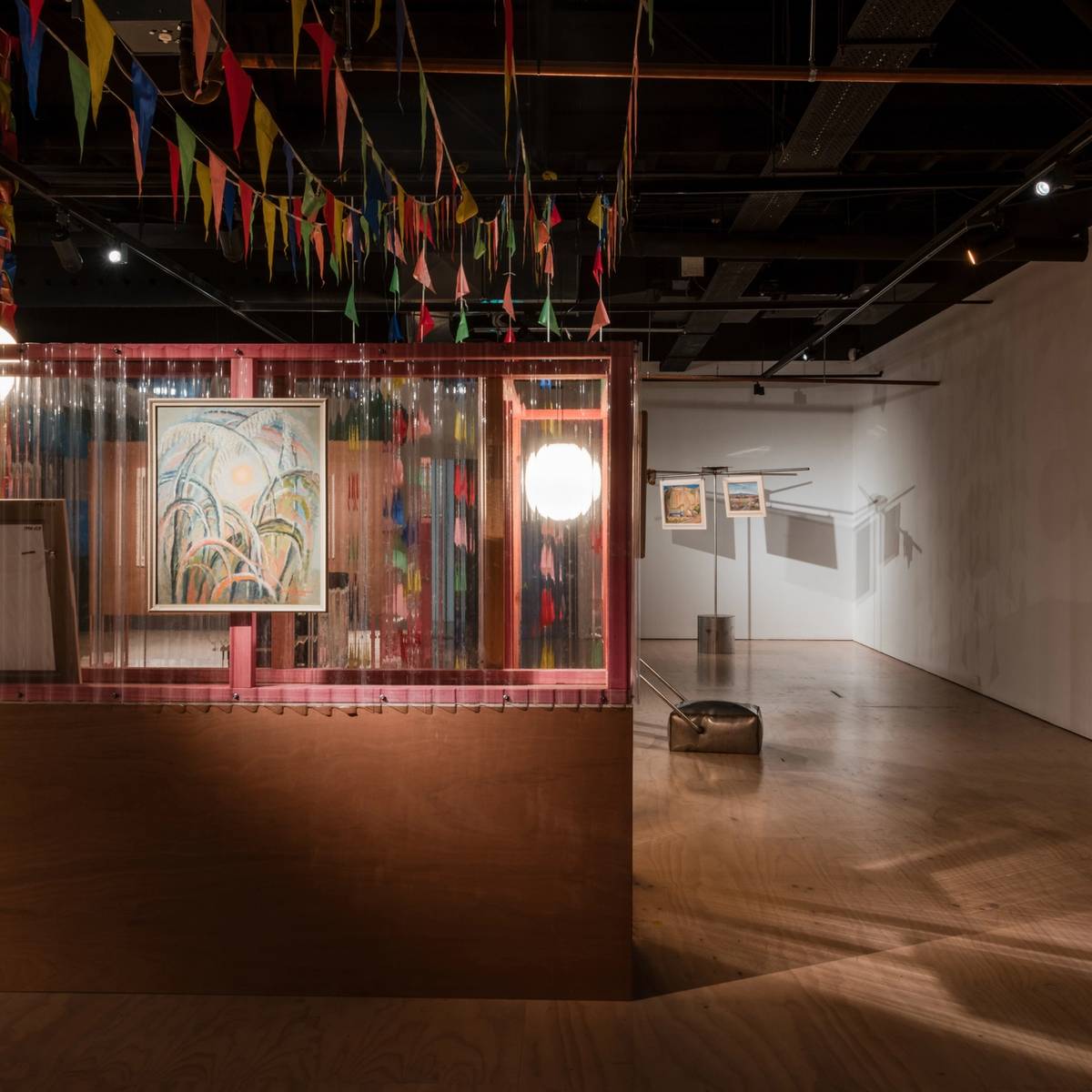This exhibition presents thirty works by Adele Younghusband from the collection of the Whangārei Art Museum, displayed on and alongside structures and objects designed by Melbourne-based artist Esther Stewart and New Zealand architect, designer and artist Gerard Dombroski.
Constructed out of stored recycled materials from the various properties, projects and exhibitions of the Whangārei Art Trust, this exhibition aims to ground Adele’s work in the day-to-day materials of the physical exhibition space and the work of the institution, while also offering her a metaphorical homecoming to the organisation she fought so hard for as the original founder.
—
Adele arrived in Whangārei in 1919, intent on setting up a photography business. She was forty-one years old and the mother of three children: Joyce, Terry and Lance. A solo mother was not unusual at the time, as the war and Spanish Flu epidemic had destroyed many families. However, Adele was remarkable in that she had left her spouse, Frank Younghusband, the previous year – a fact she would likely not have shared with the conservative community around her. Neither would she have mentioned that she was still single on the day before her 26th birthday when her daughter Joyce was born, with Frank cited only as “informant” on the birth certificate. Clearly, Adele was a free-spirited woman of resolve and many passions, foremost amongst which was her lifelong commitment to art.
Born in Te Awamutu on 3 April 1878, Adele Roche grew up drawing. Te Papa has a tableau she created as a teenager consisting of 159 meticulously copied drawings of postage stamps, which are virtually indistinguishable from the originals. As she moved into adulthood, Adele apprenticed at a photographic studio in Hamilton where her detailed drawing skills were ideally suited for the intricate work of retouching portraits.
Adele spent the next two decades moving around New Zealand, working in and managing photographic businesses while also acquiring a husband and three children. She very likely received art tuition during these years and is recorded as being a member of the Auckland Society of Arts in 1909. While her contemporary women artists were eschewing family in favour of art and overseas travel, as New Zealand was then perceived as a cultural backwater, Adele was quietly swimming against the current, working to have it all: children, career, and an active art practice – all in New Zealand.
Adele’s photography business in Whangārei took off in September 1919 and within a year she was advertising for ”a smart girl for studio”. She moved her family into the infamous Bank Street “murder house” where, in 1914, Daniel Hammon killed his wife Mary in the kitchen with an axe. Undeterred by its grisly history, Adele found that the location opposite Whangārei Primary School was ideal, being close to the town centre. A savvy businesswoman and philanthropist, Adele took her place alongside the town’s businessmen when it came to donations, sponsorships and prizes. She was also notably the first woman in Whangārei to shingle her hair.
Once she became established in the community, Adele took a leading role in initiating an arts society in Whangārei. While there had been previous discussion about (and derision of) a potential arts society in the town, it was Adele who actually got the ball rolling. In June 1921 she advertised for those interested in art and literature to meet at her photographic studio.
Some thirty people turned up, and Adele took the floor, explaining that a group had been talking about the need for a society that would actively foster local practitioners of both art and literature. Furthermore, she asserted that Whangārei should have an art gallery which would benefit the public and town.
There was clearly much animated chatter and the Whangārei Arts and Literary Society was formed that night with plans for fortnightly lecturettes, discussions and debates and a goal of organizing exhibitions. The society also committed to founding a gallery and to buying two paintings a year with the aim of building towards a permanent collection. A committee was quickly established, with Adele as honorary secretary. She offered her photographic premises as the venue for the proposed meetings, which the group gladly accepted, and the gathering closed with a vote of thanks to Adele for her role in establishing the society. This 1921 meeting was, arguably, the genesis of today’s Whangārei Art Museum.
The Whangārei Arts and Literary Society became a lively addition to the town’s culture, operating under the motto “If not the best, then our best”. They held regular meetings with varied fare, and supported a range of activities including singing, needlework, and an orchestra. True to their goal, the Society’s first significant exhibition was held in March 1922 and included national as well as local artists. It was hailed as a great success and a further three exhibitions on this scale were held over the following years, all of which were met with general acclaim.
1922 was significant for Adele in other ways. In July, she and local painter and photographer George Woolley went into business together, establishing The Art Studio on the top floor of the current Butter Factory building. The outlines of the studio’s skylights are still visible in the high ceiling. Ostensibly, George Woolley took charge of outdoor photography, while Adele worked in the studio. The surviving outdoor photographs produced by this business capture a more youthful Whangārei, while the studio portraits demonstrate a beautiful sensitivity to light and shadow. The Art Studio became the new meeting place for the Whangārei Arts and Literary Society, while its walls and wide stairwell were used for small exhibitions.
In August, Frank Younghusband died in Nelson in straitened circumstances and was identified only by a letter from Adele that was found in his jacket pocket. Around this time, her name was being romantically linked with that of Colonel Mackesy, a war hero and man of considerable means and mana. She, however, declined his proposal of marriage. Her son, Terry, later explained that the Colonel believed boys should be sent to boarding school, whereas she was determined to keep her sons by her side. It is also possible that she had simply finished with marriage, as she remained single for the rest of her life.
The next few years appear to have been busy and happy for Adele. The Art Studio thrived and Adele was an integral part of the community, doing the make-up for local repertory productions and playing violin for “parochial dances”. She was also not afraid to voice her opinions in print; when she read a letter to the newspaper deriding hawkers and the gullible women who supported them, she wrote a stinging reply, asking what other options were open to these unfortunate people and pointing out that the women in question were being kind, not gullible.
Despite her multiple commitments, Adele still found time to paint and to submit work to national competitions, garnering some attention and praise. In 1923, both Adele and Woolley gifted paintings to the Arts and Literary Society’s permanent collection. Woolley presented one of his own works, while Adele donated a painting by one of her early tutors, Robert Proctor.
Tragedy struck in 1924, when Adele’s daughter Joyce, aged 20, died from thyroid complications similar to those Adele would encounter in her old age. Adele’s daughter is buried in the Kamo Cemetery and her gravestone bears only a single word: Joyce. Despite her grief, Adele kept her business and home running while still maintaining her community commitments and her painting practice on the side. Perhaps she gained some comfort from this unrelenting activity, as well as from her strong spiritual beliefs.
More trauma loomed as New Zealand’s economy began flailing in 1927. Apparently in a bid to improve business prospects, Adele moved to Dargaville to set up a branch of The Art Studio. However, later that year she and Woolley parted ways and she renamed her business The Wairoa Studio. Adele never returned to Whangārei to live. In 1929, she moved to Auckland, then to Tauranga before settling in Hamilton where she instigated another art society and turned to teaching.
In her sixties, Adele travelled to Australia for three years to study modern art in Sydney and Melbourne. Throughout her life, she was continually exploring various forms of art, most especially painting and printmaking. Her initial representational approach evolved in response to her exposure to modernist ideas and methods, leading to narrative and spiritual paintings that synthesised classical conventions with Art Deco and Cubist innovations to form a unique personal style. Her subjects were wide-ranging, including landscape, portraiture, industrial and domestic scenes and Māori mythology.
After Adele’s departure, there were few mentions of The Whangārei Arts and Literary Society in the local newspaper. Perhaps it fell apart during the economic crisis. In the 1930s and ‘40s several proposals for a gallery were put forward but came to nothing. However, Adele’s heart must have remained with Whangārei, as in 1954 she gifted 24 of her own works to the town with the proviso that she would hold onto them “until suitable arrangements have been made for a building to house them”. Sadly, this eventuality was still many decades away and Adele never got to see an art gallery in Whangārei.
Throughout Adele’s life, her eclectic output was prodigious despite the minimal recognition she received. She passed away in 1969, on her 91st birthday, and her son bequeathed another 50 works to Whangārei which still had no adequate place to house them. It was only in 1995 that the Whangārei Art Museum finally opened its doors, with Scott Potham as the first curator. Potham had played a leading role in the founding of the gallery, working with the Whangārei District Council. He was also a great supporter of Adele’s work, helping to raise her profile both locally and nationally.
A century after the founding of The Whangārei Art and Literature Society, this exhibition celebrates Adele and her vision for a public art gallery in Whangārei.
Dr Zana Bell
